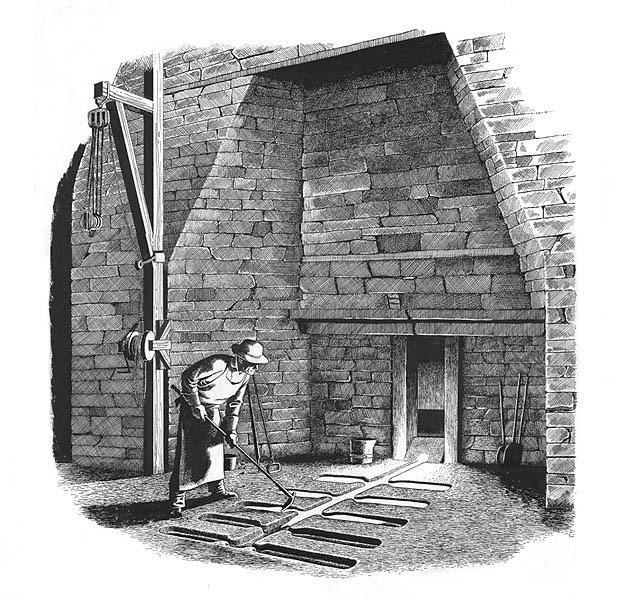Part of a series of articles titled Iron Making.
Next: Iron Making: Smelting
Article

Harpers Ferry Center / Hopewell Furnace National Historic Site
Iron making evolved over a few thousand years. Using the ancient "bloomery" method, iron ore was converted directly into wrought iron by heating the ore while at the same time melting the ore's impurities and squeezing them out with hand hammers. This is also called the "direct process." By the 1100s water-powered hammers replaced hand hammers for forging out bars of iron.
In the late 1300s, some theorize that because of the ravages of the plague upon the labor forces in Europe, water power began to replace human or animal power to blow the air into iron making furnaces. Using water-powered bellows, a large and consistent volume of air created enough heat to completely melt the ore from which iron was made. The technology created two major developments in iron production. First, blast furnaces were now able to make cast iron for the production of hollowware such as pots and kettles. Second, in the new "indirect process" cast iron could be converted into wrought iron with a higher yield of iron from the ore than the direct process.
It is the indirect process that was brought to Massachusetts and spread through North America by the skilled metallurgists/iron makers that came to Saugus. With improvements, the direct process continued as well and a few of the second generation iron making plants after Saugus thrived in the rural economy using the older, bloomery method.
This page will guide you sequentially through the smelting, refining, forging, rolling, slitting, and blacksmithing processes that were performed at Saugus.
Part of a series of articles titled Iron Making.
Next: Iron Making: Smelting
Last updated: August 26, 2021